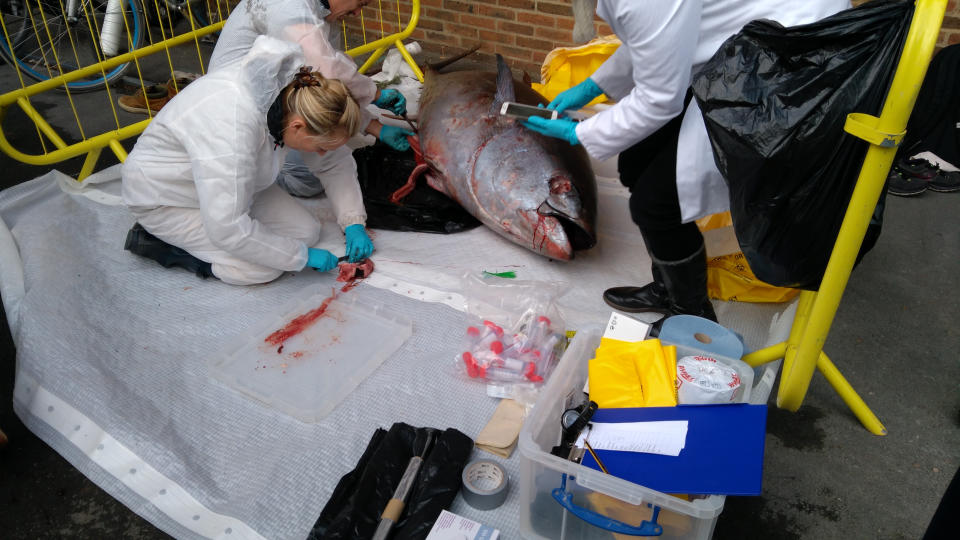Huge 2.3-metre bluefin tuna caught off Devon coast by fisherman trawling for SPRATS

A fisherman trawling for sprats had a shock when he landed a slightly different catch – a huge Atlantic bluefin tuna fish measuring 2.3 metres.
The monster fish, caught off the coast of Devon, was described as one fishing wholesaler as the largest he had seen in 40 years in the industry.
Sean Perkes, who works for wholesalers Ian Perkes Import and Export, said: “I have never seen one that size at Brixham or the UK in my 40 years of being involved in fishing.
“I was hoping to buy it for our seafood restaurant shoals which runs alongside our export fish business.”
Catching and selling bluefin tuna is prohibited in the UK so that was not possible but the enormous fish was handed over to scientists from the University of Exeter to be analysed.

It’s the first time the species has been seen in that part of the world but researchers expect more to be accidentally caught in the future.
Dr Lucy Hawkes, senior lecturer in Physiological Ecology at the University of Exeter, said: “This is an endangered species , so we want to learn as much as we can from this individual.
MORE: The human race ‘has peaked’ and we could soon start going backwards, scientists warn
MORE: Doctors face dilemma of dying man with ‘do not resuscitate’ tattoo
“The eye lenses have layers like an onion, and tests on these can reveal a ‘geographical signature’ showing where the tuna has been through its life.
“Its ear bones will allow us to estimate its age, muscle samples will give us information about genetics and we can look for heavy metals and other toxic chemicals which often stick to fats. We will also look in its guts to see if it has ingested plastic, as many marine creatures do.”

The dissection of the huge catch had to be improvised because of its size, taking place at the university’s Streatham campus instead of the usual place in Penryn.
Dr Hawkes added: “We have all the kit in Penryn, but for this job I brought a kitchen knife from home and we had to stop at B&Q for overalls and a saw.
“I think the staff there were a bit alarmed when we said we were going to cut up a body – but we explained it was a big fish.”

Dr Matthew Witt , from the university’s Biosciences Department and the Environment and Sustainability Institute, said: “Numbers dwindled in UK waters in the late 20th Century, possibly due to fishing, but in the last five years more have been seen off our coasts.
“The species might be recovering, but it’s also possible that populations are simply moving and that’s why we’re seeing more here.”

 Yahoo News
Yahoo News 

